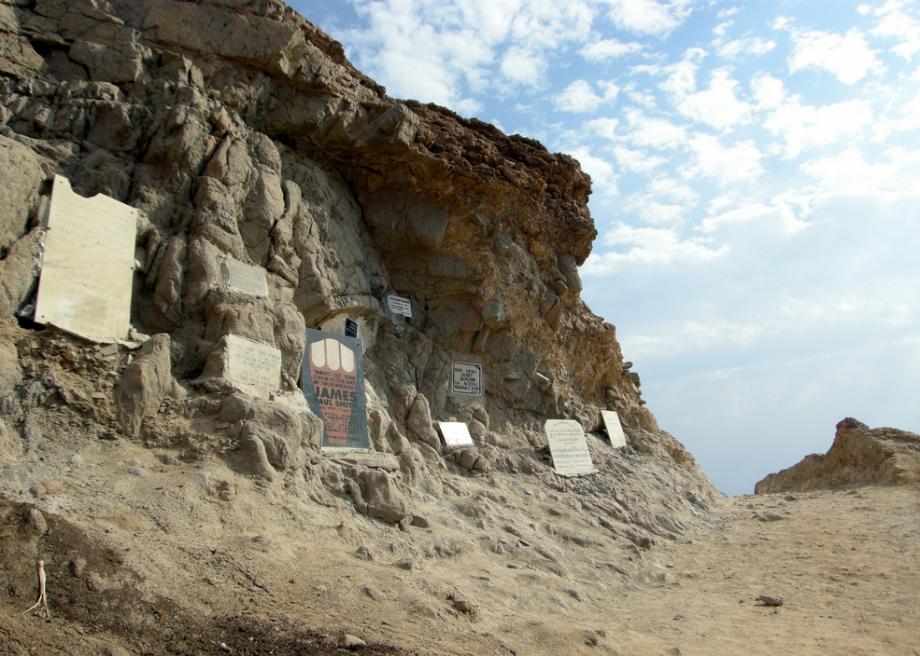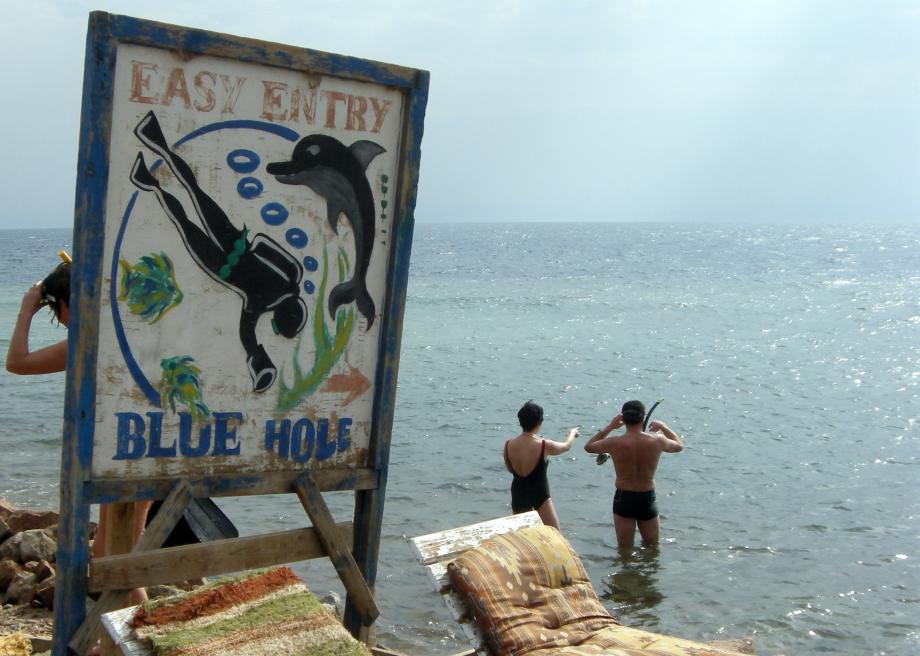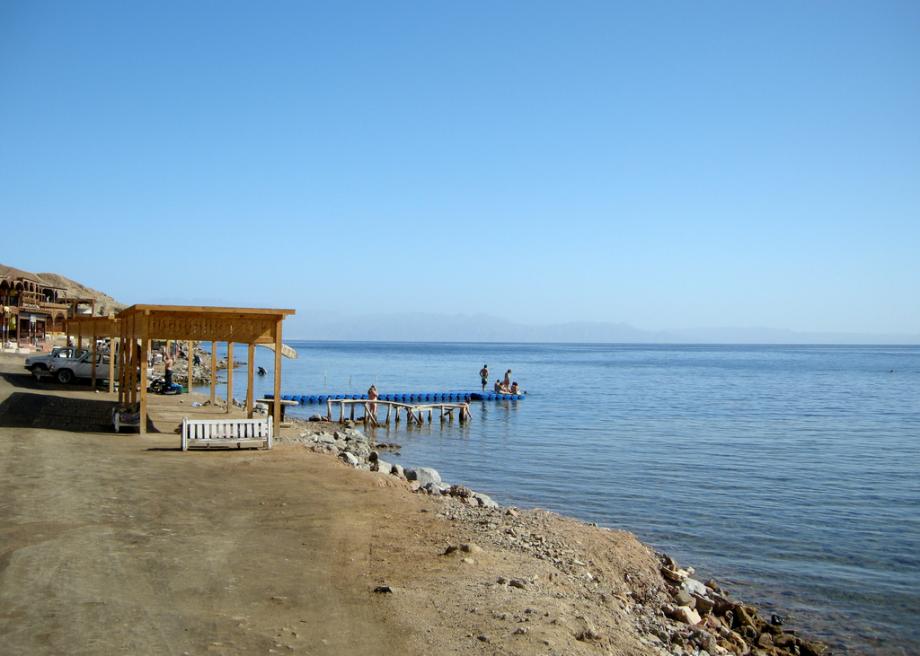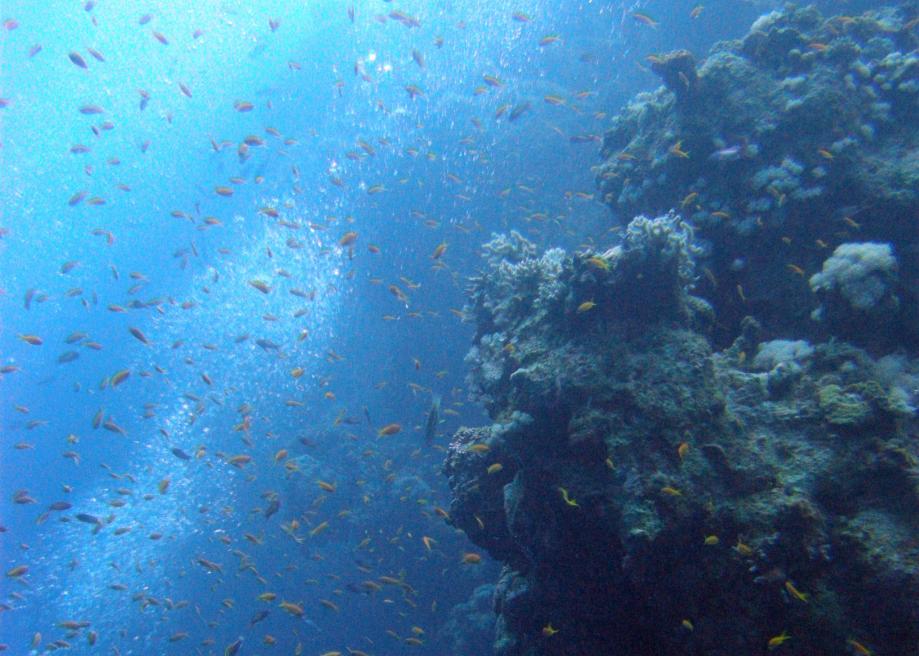Diver's Cemetery: The Blue Hole of Dahab
Atlas Obscura on Slate is a blog about the world's hidden wonders. Like us on Facebook, Tumblr, or follow us on Twitter @atlasobscura.
On the east coast of Egypt's Sinai Peninsula, a few miles north of the city of Dahab, is a diving and snorkeling site known as the Blue Hole. Every day, divers make the journey from Dahab by jeep or camel, eager to explore the coral-lined, 394-foot-deep underwater sink hole known as the Blue Hole.
At the water's edge, beside some wooden lounge chairs, is a faded, hand-painted sign. Decorated with pictures of fish, a friendly dolphin, and a bubble-blowing diver, it reads "EASY ENTRY - BLUE HOLE." It's only a few feet from the sign to the sink hole.
Technical divers — those who venture blow the 130-foot limit recommended for recreational diving — love the Blue Hole because its unusual structure offers a unique challenge. On the northeast side of the sink hole, 184 feet below the surface, is a horizontal tunnel that leads to the open sea. Known as The Arch, the 85-foot-long passage is difficult to enter due to the darkness, poor visibility, and down currents that grab at a diver's fins. But with fish wriggling by in the silent depths and coral formations catching the eye, it's certainly beautiful.
In April 2000, Russian diver Yuri Lipski strapped on an air tank and a helmet camera, loaded his belt with weights, and plunged into the Blue Hole. He never resurfaced.
Lipski died at just over 300 feet underwater. At this depth, the body is subject to nitrogen narcosis, which can play havoc on the mind by inducing overconfidence, euphoria, hallucinations, confusion, and impaired judgment. It didn't help that Lipski had just one tank full of air — technical divers are better served by multiple tanks filled with trimix, a combination of oxygen, nitrogen, and helium that reduces narcosis.
When a diver went to retrive Lipski's body at the request of his parents, he made an unnerving discovery: the footage captured by Lipski's helmet camera was still intact. The doomed diver had recorded his own death.
Lipski's final moments are now on YouTube. Titled "Fatal Diving Accident Caught On Tape," the six-minute video has garnered over eight million views. Though his face is never visible, his distress is palpable and haunting — what starts as a routine dive deteriorates into panicked thrashing as he becomes more disoriented. Clouds of kicked-up sand billow into view as Lipski's breathing rate doubles. In the end, he removes the breathing apparatus from his mouth and the frame goes still.
Lipski is not the only diver to have died at the Blue Hole. On a cliff face on the path leading to the site are 14 memorial plaques dedicated to lost divers. There's Karl Marx, an Austrian who perished in 2008. There's James Smith, whose stone reads, "Don't let fear stand in the way of your dreams." He died in the water in 2003, aged 23. There's a stone for Daniel Malak and Tarek el Kadi, friends who died in the hole on the same day in 1988.
These stones represent just a fraction of the deaths at the Blue Hole. There is no official count, but an estimated 130 people have lost their lives there within the last 15 years. If anything, the site's reputation — it's nicknamed "Diver's Cemetery" — has only enhanced the appeal of the place for divers who want to test their limits.

Other blue holes around the world:
View Blue Hole in a larger map



